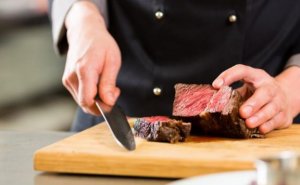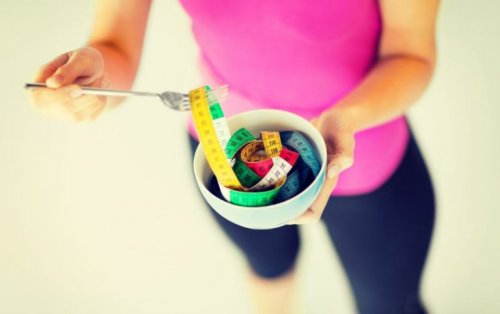How to Follow a Healthy High-Calorie Diet

For many of us following a diet would mean reducing the amount of food we eat in order to lose weight. Although it’s the most common diet, it’s not always the case. One clear example is the so-called high-calorie diet.
A healthy high-calorie diet requires medical supervision, mainly because it’s not appropriate for everyone. Not all bodies react the same way to food. In other words, each person is unique and must follow specific individual parameters.
Toned muscles
Aside from specific cases of serious conditions like malnutrition, AIDS, and cancer, the goal of this diet is to increase muscle mass. Once this goal is reached the next objective would be to tone them up.

However, we must consider that gaining weight without a proper meal plan is somewhat easy. We have all fallen into an unhealthy high-calorie diet and seen the results. Thus, a healthy high-calorie diet needs the help of doctors and specialists.
The food regimen must go alongside a strict physical training plan. Otherwise, the results may be counterproductive. Just as with plans to lose weight, this plan shows results slowly and progressively.
The key to success
In order to make a nutritional plan, we must be familiar with the Basal Metabolic Rate (BMR) chart. The BMR is the least number of calories that the body requires to carry out vital functions. This will be different for each person.
With this data, we can now increase the number of calories in the diet. Normal values of this increase are between 20 and 50 percent.
Just like any type of nutritional plan, balance is a key factor. Considering a correct balance is important when combining the essential macronutrients, like carbohydrates, proteins, and fats. The goal is to increase the amount of energy supplied to the body.
And so, to supply more energy, we must also eat more. Proteins and fats give an immediate sense of satiety, thus they have to be included in the daily menu, with moderation. Carbohydrates are the macronutrient that we raise with this diet.

Meanwhile, the body digests carbohydrates more slowly, which means the stomach will fill more quickly. In turn, your body will take longer to ask for more food.
What to eat in a high-calorie diet?
There are some essential foods in a healthy high-calorie diet. These are so because they are not empty calories. They supply a high dose of other nutrients while having a high number of calories in them.
- Eggs are a good source of protein and fat. They are versatile in the kitchen and you can cook them in many different ways for different meals. However, be careful to not exceed the recommended amount as they are high in cholesterol.
- Oats contain carbohydrates that the body absorbs slowly.
- Rice and pasta are necessary ingredients in this diet, perfect for lunch.
- For snacks, we recommend whole wheat bread with a fruit-based jelly.
- You must also consume enough fats, thus look for natural sources of fats such as nuts, avocado, certain seeds, and soybeans, among others.
- The so-called lean meats are a good source of protein containing a lower amount of cholesterol than red meat.
- Seafood can also be a source of protein.
- Lastly, milk products contain proteins and fats that may help increase the number of calories in the diet. Look for low sodium and low cholesterol products.
Finally, to sum up, those looking for a high-calorie diet must include certain types of food in their meals. Always making sure that most of the foods you choose are from the most natural source possible and the least processed.
For many of us following a diet would mean reducing the amount of food we eat in order to lose weight. Although it’s the most common diet, it’s not always the case. One clear example is the so-called high-calorie diet.
A healthy high-calorie diet requires medical supervision, mainly because it’s not appropriate for everyone. Not all bodies react the same way to food. In other words, each person is unique and must follow specific individual parameters.
Toned muscles
Aside from specific cases of serious conditions like malnutrition, AIDS, and cancer, the goal of this diet is to increase muscle mass. Once this goal is reached the next objective would be to tone them up.

However, we must consider that gaining weight without a proper meal plan is somewhat easy. We have all fallen into an unhealthy high-calorie diet and seen the results. Thus, a healthy high-calorie diet needs the help of doctors and specialists.
The food regimen must go alongside a strict physical training plan. Otherwise, the results may be counterproductive. Just as with plans to lose weight, this plan shows results slowly and progressively.
The key to success
In order to make a nutritional plan, we must be familiar with the Basal Metabolic Rate (BMR) chart. The BMR is the least number of calories that the body requires to carry out vital functions. This will be different for each person.
With this data, we can now increase the number of calories in the diet. Normal values of this increase are between 20 and 50 percent.
Just like any type of nutritional plan, balance is a key factor. Considering a correct balance is important when combining the essential macronutrients, like carbohydrates, proteins, and fats. The goal is to increase the amount of energy supplied to the body.
And so, to supply more energy, we must also eat more. Proteins and fats give an immediate sense of satiety, thus they have to be included in the daily menu, with moderation. Carbohydrates are the macronutrient that we raise with this diet.

Meanwhile, the body digests carbohydrates more slowly, which means the stomach will fill more quickly. In turn, your body will take longer to ask for more food.
What to eat in a high-calorie diet?
There are some essential foods in a healthy high-calorie diet. These are so because they are not empty calories. They supply a high dose of other nutrients while having a high number of calories in them.
- Eggs are a good source of protein and fat. They are versatile in the kitchen and you can cook them in many different ways for different meals. However, be careful to not exceed the recommended amount as they are high in cholesterol.
- Oats contain carbohydrates that the body absorbs slowly.
- Rice and pasta are necessary ingredients in this diet, perfect for lunch.
- For snacks, we recommend whole wheat bread with a fruit-based jelly.
- You must also consume enough fats, thus look for natural sources of fats such as nuts, avocado, certain seeds, and soybeans, among others.
- The so-called lean meats are a good source of protein containing a lower amount of cholesterol than red meat.
- Seafood can also be a source of protein.
- Lastly, milk products contain proteins and fats that may help increase the number of calories in the diet. Look for low sodium and low cholesterol products.
Finally, to sum up, those looking for a high-calorie diet must include certain types of food in their meals. Always making sure that most of the foods you choose are from the most natural source possible and the least processed.
This text is provided for informational purposes only and does not replace consultation with a professional. If in doubt, consult your specialist.








